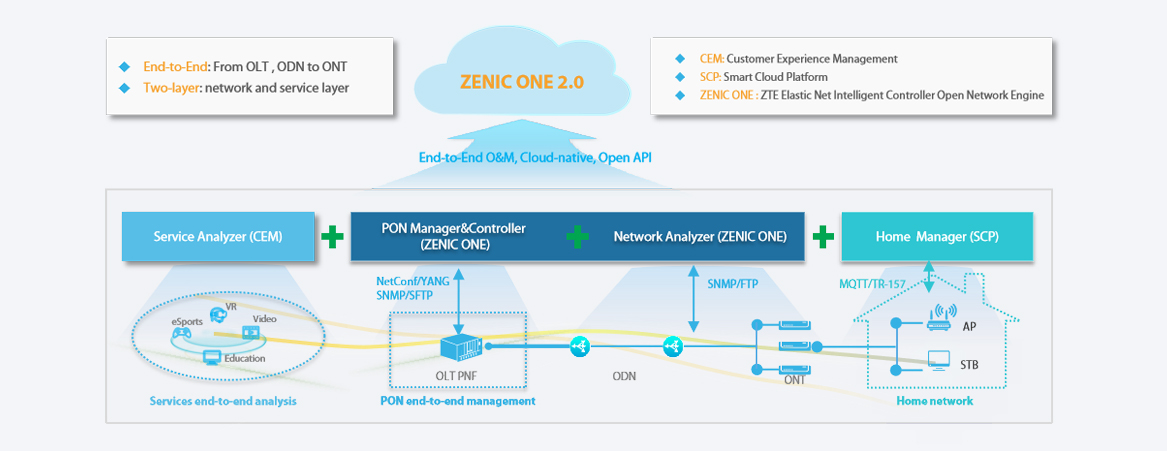
ZENIC ONE 2.0
The ZENIC ONE 2.0 is ZTE's new-generation end-to-end O&M platform for fixed access networks. It can manage OLTs, ODNs, ONUs and the in-home networks including Wi-Fi. It provides a unified portal for operators to manage and operate their campus networks in different areas, as well as their residential networks. It has powerful AI and big data engines to improve the O&M efficiency in network planning, maintenance, optimization and even marketing guidance, which helps operators save OpEx and improve ARPU.
